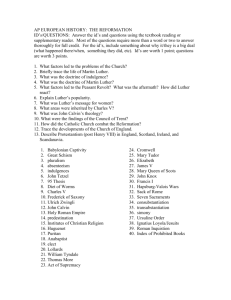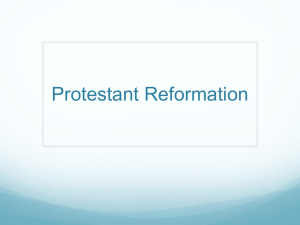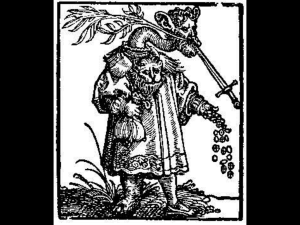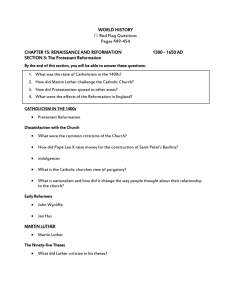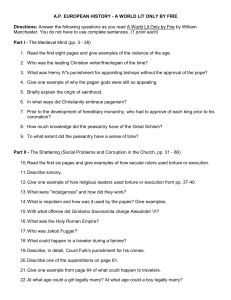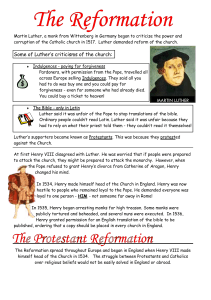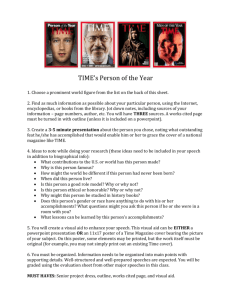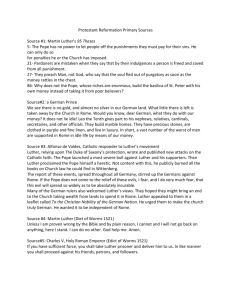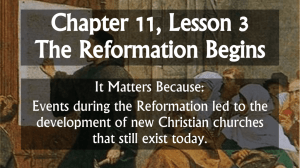The Reformation
advertisement
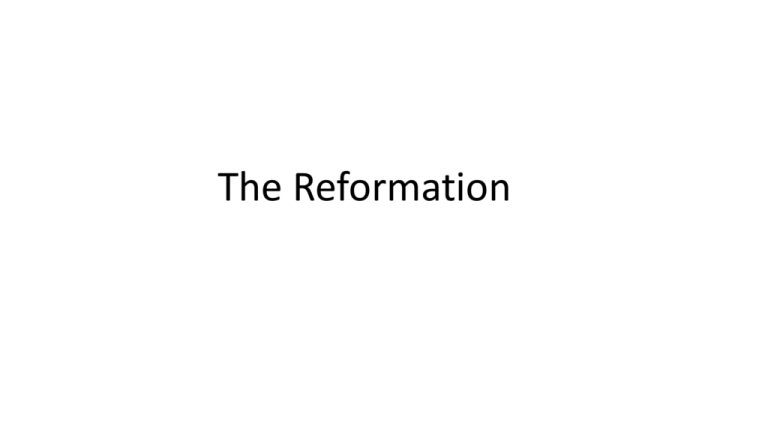
The Reformation Many, especially the humanists believed the church was more interested in worldly matters than spirituality. Political power and wealth over religious teachings. Printing press played a large part. Merchants resented paying taxes to the church in Rome Popes during the renaissance patronized the arts, spent lavishly on personal pleasures and were involved in vice. Pope Alexander VI claimed to have fathered several children. Many priests and monks were poorly educated and could barely read. Critics John Wycliff of England and John Hus of Bohemia were some of the first to advocate church reform. Erasmus and Thomas More also voiced there opinions. Martin Luther: took a stand against friar Johann Tetzel for raising money to rebuild St. Peter’s Cathedral by selling indulgences. Indulgence was money a person could give to the church in exchange for absolution from sin. Buying their way to heaven. He wrote 95 Theses against Tetzel and posted them on the door of the church in Wittenburg. Someone copied his Theses and took them to a printer. This began the reformation. Luther: Salvation could be won only by forgiveness from God. Faith and good works The pope and the traditions were false authorities all church teachings should be based on the words of the Bible People did not need priests to interpret the Bible for them all people were equal. Pope Leo X Threatened to excommunicate Luther unless he took back his words. His students cheered as he through the decree in a bonfire. Charles V ordered him to stand trial and issued the Edict of Worms (vawrmz) no one was to give him food or shelter. Frederick the Wise of Saxony hid him for a year. Luther translated the New Testament into German His followers had started a separate religion called Lutherans. Those that did not agree became known as Protestants Peasants began to revolt in Germany based on Luther’s ideas. Many raided, pillaged and burned monasteries. Luther ordered them captured with no mercy. Princes who remained loyal to the pope signed an agreement to join forces against Luther’s ideas. Henry VIII wanted to divorce his wife Catherine Asked the pope to annul his marriage He refused due to her son being Charles V the Holy Roman Emperor Henry asked Parliament to end the pope’s power in England Act of Supremacy Henry married Anne Boleyn- she had a girl later beheaded. Married Jane Seymour had a son Edward. Mary the daughter of Catherine took the throne after Edward and returned to Catholicism When Mary died Elizabeth the daughter of Anne Boleyn took the throne- returned to Protestantism set the Church of England- the Anglican Church John Calvin also a Protestant published Institutes of the Christian Religion Calvin set up a religion based on predestination that God saves the “elect” which are very few. His religion is known as Calvinism. He believed the ideal religion is a theocracy John Knox a Scottish preacher and an admirer of Calvin and created the Presbyterian Church. In France the Calvin’s were called Huguenots Anabaptist believed someone should be baptized only when old enough to decide to be Christians. Anabaptist became the Amish and the Mennonites
